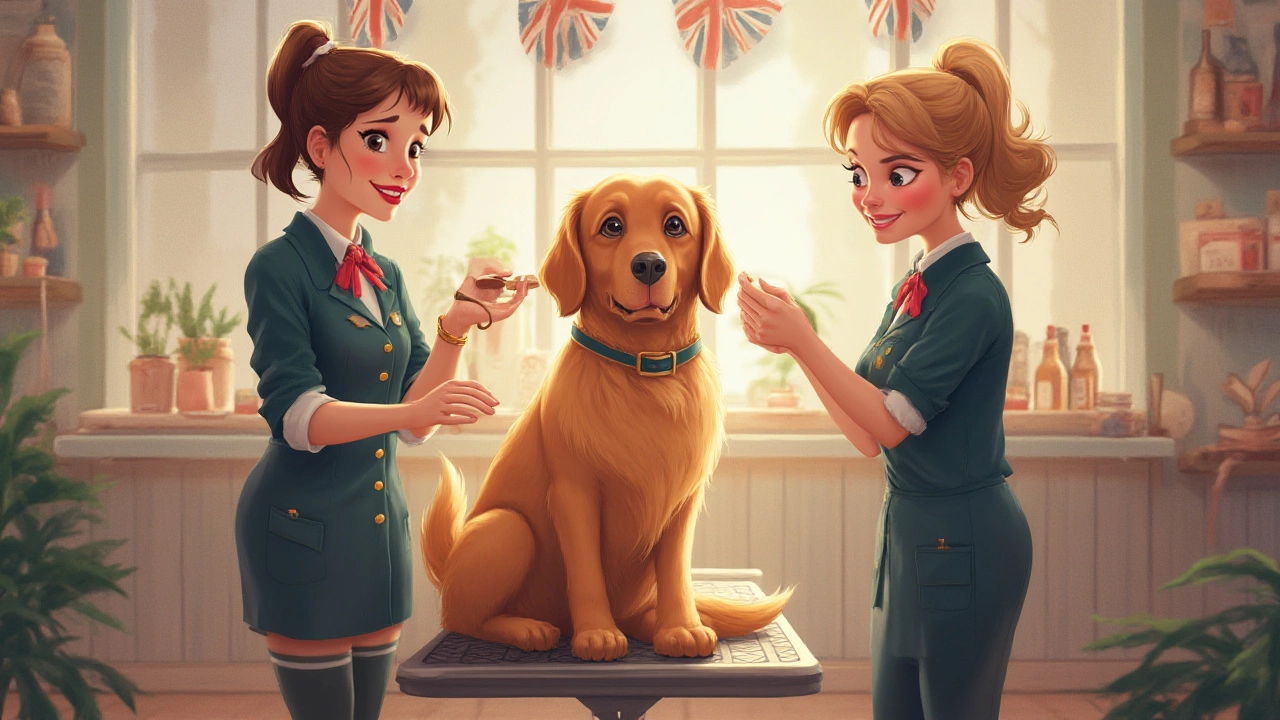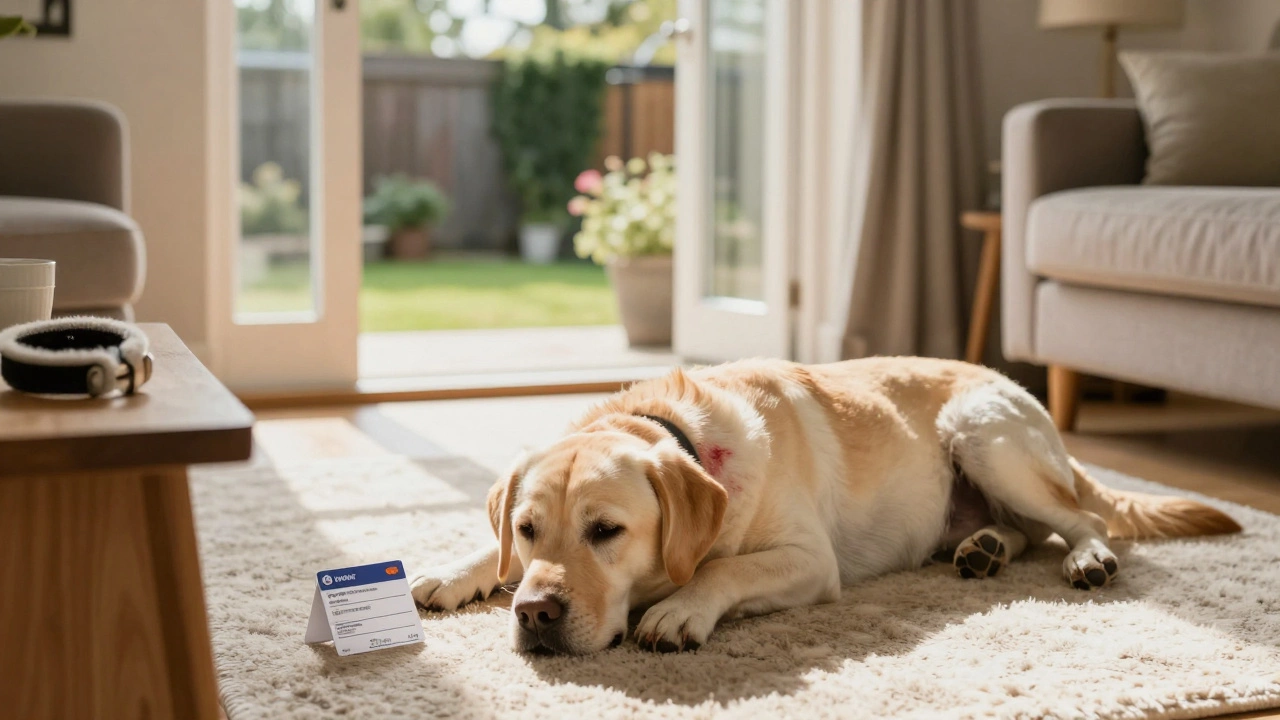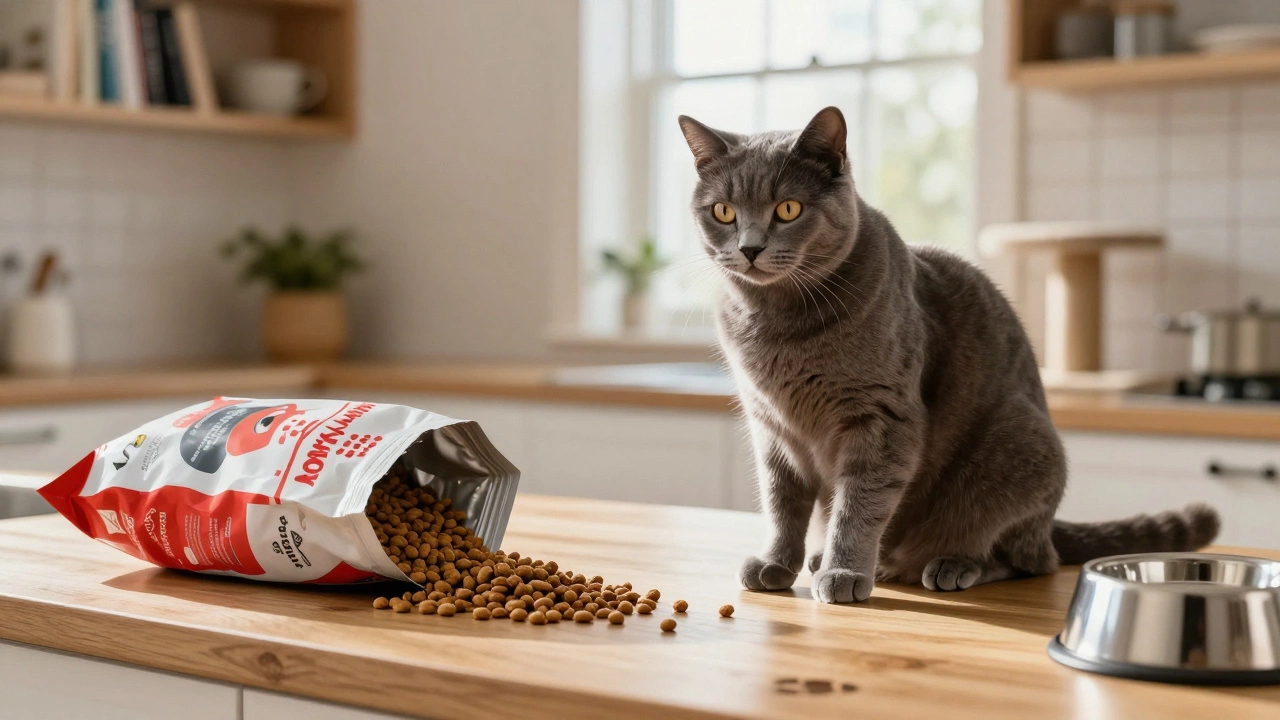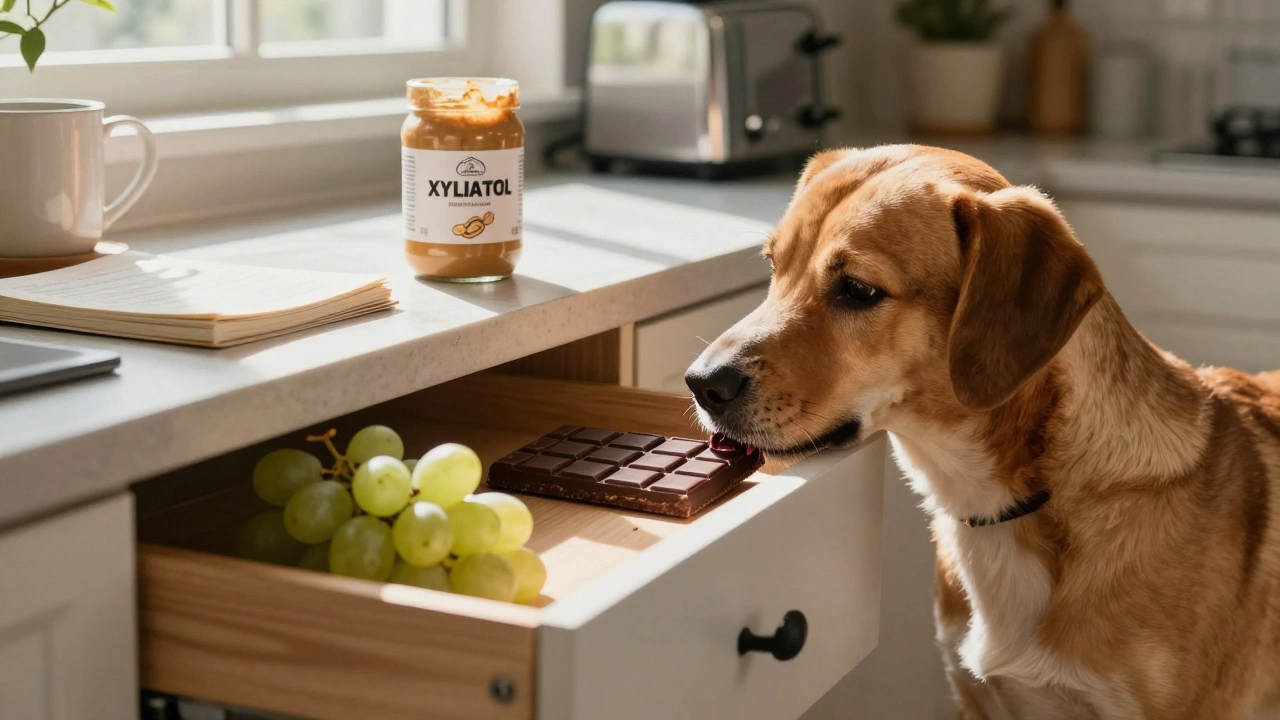Ever watched a dog squirm through a simple bath like it’s competing in a ninja obstacle course? Makes you wonder how groomers manage to turn those same jumpy pups into glossy, primmed showpieces without getting nipped or drenched. It’s far less about brute force and a lot more about a bag of well-honed tricks, gentle psychology, and the kind of patience usually reserved for zen masters or kindergarten teachers on a sugar rush day.
The Psychology Behind Calm Dogs
First thing most dog groomers master isn’t how to hold a clipper—it’s how to read canine body language. Shaking paws, pinned-back ears, slow tail wags—all tiny clues. The trick is to dial in to a dog’s mood before a single brush stroke. Most pros will greet a new client at dog level, make slow movements, and use a soft, upbeat tone. Think about that time you tried to coax a toddler into a pair of wellies. It never works if you force the issue. Dogs pick up on our stress like sponges. Calm groomer, calmer dog.
There’s solid science here too. One British study found dogs mirrored their owner’s anxiety, with heart rates rising together. Groomers use this knowledge. Many will pause, take deep breaths, and create a relaxed environment with gentle music or dog-safe aromatherapy sprays (lavender is a classic). These little touches aren’t just for Insta-perfect spas—they really take the edge off for skittish pups.
Sensory stuff matters too. Slick metal tables can be a dog’s nightmare. Groomers often use textured, non-slip mats to give paws a strong grip, making dogs feel grounded, not ready to bolt. This isn't just about comfort—slipping and sliding makes most pets way more likely to panic and wriggle. A proper mat can shave minutes off the entire session (and a few shed years off a groomer’s life).
Another neat trick: the slow approach. Letting a dog sniff the tools, running water, or dryer before starting the real work. Desensitizing them to the ‘weird stuff’ signals it’s safe—nothing’s coming out of nowhere. Groomers will often reward even the tiniest bits of relaxed behavior with treats or praise. These aren’t bribes—they’re building blocks for trust. Some salons stash jars of dog peanut butter or cheese spread for dogs that need the extra incentive.
Tools Every Groomer Swears By
Forget anvils and complicated straps—professional setups use smart tools that keep stress to a minimum and paws right where they’re supposed to be. The centerpiece is usually a grooming table with an adjustable arm and a loop or harness. This looks almost like what you’d see at a vet, but gentler. The loop goes gently around the dog’s neck or waist, not to restrain so much as to remind them: "Hey, stay put, you’re safe." Think of it like a seatbelt not a straitjacket.
Dog grooming arms are adjustable for a reason. Some dogs relax when standing, others when sitting or lying down. Groomers get to know the dog and set the table height and loop style to their size and comfort. For especially jumpy dogs, there are ‘no-sit’ harnesses that support under the belly and discourage sudden leaps without pinching or pulling.
There’s also a booming market for distraction tools. Yep, distraction works better than discipline. Lick mats smeared with soft treats can keep dogs happily focused for ten minutes while their nails are trimmed or ears cleaned. Groomers will stick these on the table surface—genius, right?
When drying, the noise alone can send dogs into orbit. Pro tips: use quieter dryers made for pets (some have noise-cancelling designs), keep the nozzle moving, and never blow directly at the face. Want to really see the difference? Salons with high-end dryers report fewer dog freak-outs than old-school setups. No one wants a wild west blow-dry.
Here’s a handy table with some of the most-used tools in UK salons as of 2024:
| Tool | Main Use | Calming Effect |
|---|---|---|
| Grooming Table with Arm | Safe positioning | Prevents sudden moves |
| Non-slip Mat | Surface traction | Reduces anxiety |
| Lick Mat | Distraction | Keeps focus elsewhere |
| Quiet Dryer | Drying fur | Lower noise, less stress |
| Calming Sprays | Mood setting | Soothes nerves |
| Treat Pouch | Reward system | Encourages compliance |
One thing you won’t see? Muzzles as the first solution. Most groomers prefer conditioning and positive experiences over gadgets that make a dog feel trapped.
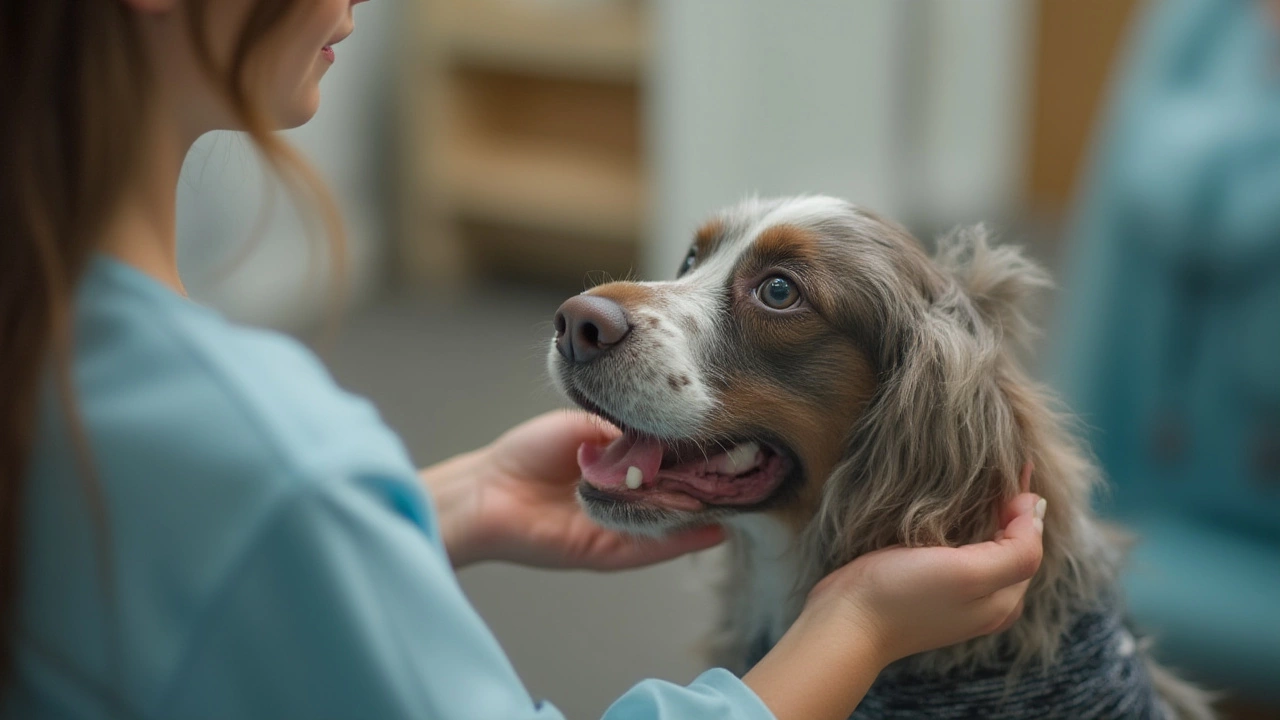
Training Techniques That Actually Work
It isn’t all about fancy equipment. A dog groomer’s true weapon is a deep understanding of dog training basics—think small victories, not big battles. Catch that sliver of good behavior? Mark it instantly with a gentle word (“Nice!”) or a quick treat. This is classical conditioning in action, and it builds up a foundation of trust that pays off in every future session.
Dogs learn routines fast. So groomers follow pretty much the exact same order every visit—brush, bath, blow-dry, trim—so the dog knows what’s coming next. Surprises are for birthdays, not for anxious terriers. And every pause is deliberate; sometimes even the bravest dog needs to get down, walk in a circle, then get back on the table. Rushing things ruins the whole vibe.
For the really stubborn cases—think rescue dogs with a rough past, or breeds that hate being handled—groomers work in pairs. One gently distracts and reassures, while the other clips or brushes. This ‘tag-team’ always puts the dog’s emotional state first. If panic spikes, they stop, take a breather, and reassess.
A favorite tip among pros: the “Gentle Touch” method. Rather than holding a pup in an iron grip, they’ll just put a hand lightly on the dog’s shoulder or chest, instantly reminding the animal that someone calm is nearby. It’s grounded in real science too—a gentle, steady touch lowers heart rate and reduces adrenaline spikes in dogs, according to animal behaviorists.
Another critical skill: ignore the drama. Some dogs are world-class actors. Light whining, paw lifts, and little fake shakes can just be a way to test boundaries. Experienced groomers don’t fuss or rush to soothe these behaviors. By staying steady and not reacting, they teach the dog that wiggling won’t get them out of the gig.
Tips for Owners: Keeping Dogs Calm at Home
Wondering how you can help your own dog stop performing circus-worthy tricks during home grooming? The answer: start small, reward big. You don’t need a full-on salon setup—practice makes the pooch calmer. Pick the quietest room at home and use the same words and steps every time. The more predictable, the better.
Start with simple sessions: maybe just brush one paw, then heap on the praise. Keep initial grooming bouts short—just a few minutes—so your dog doesn’t get bored or stressed. Bring out tasty treats, their favorite toy, or even a frozen lick mat for longer jobs. Sounds silly, but a bit of peanut butter does wonders for dogs that hate having their feet touched.
Introduce new sights and sounds slowly. Let your dog sniff the brush or clippers, turn them on away from their body for a few seconds, and watch for their reaction. If they seem relaxed, offer a treat and turn it off. It’s the “look how chill this is!” training, and repetition beats rush.
If you’re self-grooming, always have a second person nearby for bigger jobs. Another pair of hands can distract the dog or step in during a wiggle-fest. And if your dog really hates being touched in certain spots, don’t force it—try a different day or approach.
Sometimes, grooming at home just isn’t realistic for certain temperaments or coat types. There’s no shame in booking a pro. Daily practice with touch and simple handling—like checking ears or lifting paws—still pays off, even if you leave the tricky bits to expert hands.
For first salon visits, ask your groomer about ‘intro sessions’ where your dog just explores the space and gets a treat—no bath or clippers. Repeated friendly visits often do the trick, so the next real appointment goes fuss-free.
Remember, your own attitude sets the pace. If you act like grooming is just a normal, easy routine, your dog will start to think so too. Even on tough days, patience (plus a pocketful of treats) goes a long way. Honestly, half of successful grooming is simply about making it all feel like no big deal.

